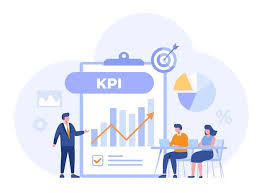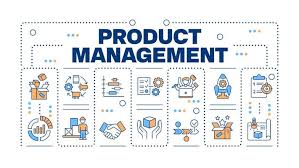How do you assess system robustness through load testing, benchmarks, and monitoring?
Understanding a system's robustness isn't just a technical exercise; it's a critical component of risk mitigation and value assessment. System's ability to withstand pressure, perform consistently, and scale efficiently is paramount for long-term success, attracting investment, and securing market share. It's not enough for an application to "work"; it must excel under demanding conditions. This requires a sophisticated, data-driven approach leveraging load testing, benchmarking, and continuous monitoring.
Understanding System Robustness and Performance Testing
System robustness refers to an application's ability to continue operating reliably, or at least in a degraded mode, even when pushed beyond its normal operational limits. This concept is a core part of performance testing, an umbrella term encompassing various methods to evaluate how a system behaves and performs in terms of speed, stability, scalability, reliability, and resource usage.
Key metrics monitored during performance testing are essential indicators of system health:
• Response Time: How quickly the system processes a request and delivers a result. Exceeding three seconds can significantly impact user satisfaction and lead to abandonment.
• Throughput: The number of transactions or requests processed per second, indicating efficiency under load.
• Error Rate: The percentage of failed requests against total requests. A high error rate often signals resource bottlenecks or poor error handling.
• Resource Utilization: Monitoring consumption of CPU, memory, and bandwidth helps identify inefficiencies.
By analyzing these KPIs, you can identify bottlenecks, bugs, and errors, providing crucial insights for optimization.
The Role of Load Testing in Assessing Robustness
Load testing is a specific type of performance test that simulates the anticipated load on a system to check its behavior under projected numbers of concurrent users performing transactions. Its primary goal is to ensure software efficiency and reliability under expected conditions, helping to uncover potential bottlenecks and confirm system robustness.
During load testing, the actual metrics (response time, throughput, percentage of errors, resource usage) are compared against expected metrics to determine if the system is ready for deployment. Load testing should be performed continuously, ideally integrated into continuous integration cycles, to ensure your system consistently meets performance requirements.
Pushing Limits with Stress Testing and Scalability Assessments
While load testing assesses performance under expected conditions, stress testing pushes the application to its upper limits to identify its saturation point and breaking points. This type of testing examines how the system behaves under intense loads and, crucially, how it recovers when returning to normal usage. It looks for eventual denials of service, slowdowns, and data corruption. Variations include:
• Spike Tests: Quickly increasing requests to stress levels and then decreasing them.
• Endurance (Soak) Tests: Tracking performance under growing users or draining tasks over an extended period to detect issues like memory leaks.
Scalability testing directly measures how an application can scale certain performance attributes up or down, assessing the system's ability to handle increasing numbers of users, data volume, or transaction volume without a decline in performance. Key metrics for quantifying scalability include response time, throughput, and resource utilization, which are fine-tuned for performance optimization. Technologies like caching strategies and Content Delivery Networks (CDNs) can significantly enhance performance and address latency issues, which directly impact user experience.
Benchmarking for Competitive Edge and Standards Adherence
Benchmarking involves comparing your system's performance against industry standards or competitor software. This provides an objective measure of how your software performs in its domain and helps you assess your competitive position. By understanding competitor strengths and weaknesses, you can identify gaps in the market and highlight your unique value proposition. This comparative analysis is vital for evaluating performance, reliability, and scalability against industry norms.
Continuous Monitoring for Ongoing Reliability
Beyond planned testing, continuous monitoring is paramount for ongoing system robustness. This involves persistent surveillance of systems and networks to detect and respond to security events promptly. Observability systems go beyond classic monitoring, enabling a deeper inspection and understanding of your application stack to answer questions about what happened, who was affected, and how issues can be fixed.
Tools that provide real-time analysis of system logs, performance, and errors/warnings during runtime are crucial. Continuous monitoring helps identify trends and patterns over time, spotting emerging issues or dissatisfaction before they escalate. This proactive approach allows organizations to swiftly adapt their R&D strategies in response to market trends and optimize project pipelines, ensuring sustained long-term growth and resilience.
The Indispensable Role of Technical Due Diligence
All these KPIs come together under the umbrella of Technical Due Diligence (TDD), a comprehensive assessment of a company's technological assets—its infrastructure, software systems, intellectual property, and cybersecurity measures—to identify risks, assess scalability, and ensure alignment with business goals. TDD aims to ensure that the technology can accommodate future expansion and adapt to shifting market dynamics, supporting strategic objectives.
During TDD, experts scrutinize areas like code quality to identify technical debt, which can significantly impact future development costs and timelines. Automated tools are essential for efficient and accurate reviews, helping to spot strengths and weaknesses. Furthermore, modern due diligence increasingly includes ongoing monitoring to ensure continued compliance and risk mitigation even after a transaction is complete.
By diligently tracking and evaluating these KPIs, organizations can gain a comprehensive understanding of their technology's health, anticipate challenges, make informed strategic decisions, and secure the long-term success and resilience of their systems in an ever-evolving digital landscape



















